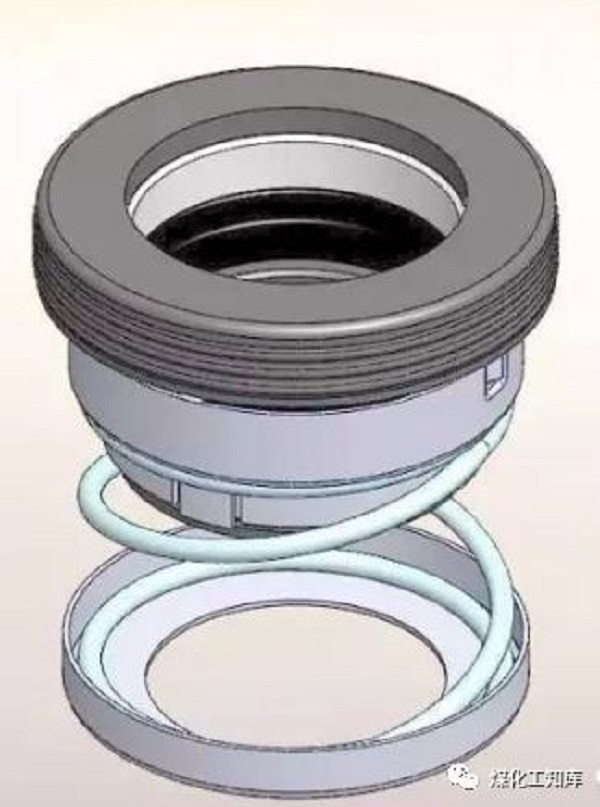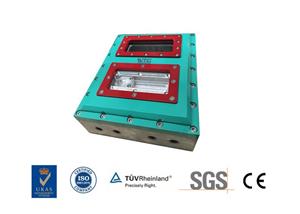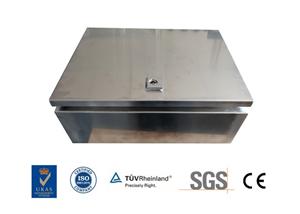Summary of failure reasons for nine pump seal types
The device or measure that the medium leaks out of the pump or prevents external impurities or air from entering the pump is called a seal. The sealed medium is usually liquid, gas or dust.
There are two types of pump sealing devices: one is a static seal and the other is a dynamic seal. Static seals are usually available in gasket seals, O-ring seals, and thread seals. Dynamic seals are mainly soft packing seals, oil seals, labyrinth seals, spiral seals, dynamic seals and mechanical seals.
There are two main reasons for the leakage: First, there is a gap on the sealing surface. Second, there is a pressure difference on both sides of the sealing part. Eliminating or reducing any one of the factors can prevent or reduce leakage and achieve the purpose of sealing. The design pressure and the use pressure of the pump are objective and cannot be reduced, so the seal of the pump should solve or reduce the gap between the sealing surfaces. Such gaps include gaps between the sealing surfaces and gaps inside the sealing device Bunsen.

Machinery Seal
Mechanical seals are the main method of modern pump shaft seals. Although it is not easy to achieve complete leakage-free use, it is completely possible to achieve a small, completely acceptable leakage. However, embarrassing situations often occur in the operation of the pump, so what is the reason for the failure of the mechanical seal?
1. The material selection of the mechanical seal is inappropriate. The material of the mechanical seal does not match the medium being conveyed. During operation, the sealing elements are quickly corroded, dissolved or worn, thus losing the sealing ability. Therefore, selecting the material of the mechanical seal according to the nature of the conveying medium is a prerequisite to ensure its sealing function and normal life.
2. The flushing condition of the mechanical seal does not meet the design requirements. When conveying the medium that is easy to crystallize or have fine particles, it must be rinsed with a certain pressure and a certain flow of washing liquid, otherwise its crystals or particles will accelerate the wear of the seal pair, and affect the automatic compensation after the seal pair wears out, causing leakage. Therefore, according to the nature of the conveying medium, not only the corresponding flushing pipeline must be configured, but also instruments and devices with monitoring and adjustment functions must be installed to ensure that the pressure and flow of the flushing liquid meet the design requirements in order to maintain the normal operation of the machine seal. Ignored by users.
3. The pressure that each mechanical seal can withstand is limited. Due to the inaccurate calculation of the pressure in the seal cavity, the pressure in the seal cavity exceeds the pressure that the mechanical seal can withstand, causing leakage, which is also a common seal. One of the reasons for failure.
4. The working temperature of the mechanical seal cannot exceed its specified value. In designs with cooling pipes, the cooling effect is often reduced due to insufficient flow of the cooling medium; in designs without cooling pipes, the mechanical seal is often in a dry friction state due to air trapped in the sealed cavity. In both cases, the working temperature of the moving seal pair of the mechanical seal is too high and the wear is accelerated, resulting in seal failure.
5. When using a single spring mechanical seal, ignoring the correct combination of the rotation direction of the spring and the rotation direction of the pump rotor sometimes occurs. Or it was not specified in the design, or negligent in assembly, and the spring force of the mechanical seal was not increased due to the rotation of the rotor. Instead, the pressure of the friction ring of the moving ring and the static ring was insufficient to cause leakage.
Oil seal
Oil seal is a self-tightening lip seal. It has a simple structure, small size, low cost, convenient maintenance, and low resistance torque. It can prevent the leakage of media, and prevent the invasion of external dust and other harmful substances. It has a certain compensation ability, but it is not resistant to high voltage, so it is generally used in low voltage occasions. The oil seal should be installed on a shaft with a manufacturing accuracy of h8 to h9, a surface roughness of 1.6 to 0.8 μm, and a surface hardening treatment. The sealing medium should not contain solid particles and impurities, otherwise it will cause rapid wear of the oil seal and shaft and make the seal ineffective.
Gasket seal
Gaskets are the basic components of static seals for centrifugal pumps and are used in a wide range of applications. The selection of the gasket is mainly determined according to the factors such as the pumping medium, temperature, pressure and corrosivity. When the temperature and pressure are not high, non-metallic gaskets are generally used; when medium-pressure and high temperature, non-metallic and metal combination gaskets are used. Non-metallic gaskets are most commonly used in pumps, and their materials are generally paper, rubber, and polytetrafluoroethylene. When the temperature does not exceed 120 ° C and the pressure is below 1.0Mpa, green shell paper or mold paper gasket is generally used. If the medium to be transported is oil and the temperature is between -30 and 110 ° C, nitrile rubber with good aging resistance is generally selected. When the conveying medium is at -50 ~ 200 ℃, the use of fluorine rubber is more suitable. In addition to its resistance to oil and heat, its high mechanical strength is also its main feature.
In chemical pumps, because the conveyed medium is corrosive, polytetrafluoroethylene is generally used as the gasket material. As pumps are used in more and more fields, the types of media to be transported are also increasing. Therefore, you should consult related materials or make correct choices after selecting materials for gaskets.
There are several reasons for the failure of gaskets:
1. The internal structure or thickness of the gasket material is uneven, and the use of cardboard with cracks or wrinkles makes the gasket itself form a gap. When the force acting on the gasket makes the elastic deformation of the gasket insufficient, As these gaps are filled, leakage is inevitable.
2. The material of the gasket is not suitable for the medium being conveyed. Due to the diversity of the chemical properties of the chemical products transported by the pump, and to increase the combustion value of the fuel or to change the products after combustion, some properties of the fuel are changed by adding a small amount of additives to the fuel, so It is not easy to choose the material of the gasket suitable for the conveying medium, so the phenomenon of leakage due to erosion of the gasket due to incompatibility often occurs.
3. Insufficient pressure on the gasket. Because there are always micro unevenness on the sealing surface, sometimes a number of annular grooves are also processed on the sealing surface. If the seal is guaranteed, the sealing gasket must be applied with sufficient pressure to cause elastic or plastic deformation. Fill these gaps.
The compression force of various gasket materials is usually given in the gasket manufacturer's samples or product specifications, and can also be determined experimentally. Because the pressing force required for the gasket cannot be achieved during assembly, or the compression bolt is loosened due to vibration during normal operation, the pressing force is reduced, and the original elasticity is lost due to the aging and deformation of the gasket material, which will cause the gasket The wafer fails and leaks occur.
O-ring seal
Rubber O-rings are commonly used in pumps. Because its shape is very simple, it is easy to manufacture and low in cost. No matter how large the overall size of the O-ring is, its cross-sectional size is very small (only a few millimeters). The more prominent advantage is that the O-ring has a good sealing ability and a wide range of use. The working pressure of static seal can reach more than 100MPa, and the dynamic seal can reach 30Mpa. The applicable temperature is -60 ~ 200 ℃, which can meet the requirements of various media. Therefore, it is more and more widely used in the design of pumps.
The O-ring is installed between the groove and the sealed surface with a certain amount of compression. The resulting rebound force gives the sealed smooth surface and the bottom surface of the groove an initial compressive stress. Thereby it acts as a seal. When the pressure of the liquid to be sealed is increased, the deformation of the O-ring is also increased, so that the pressure transmitted to the sealing surface is also increased, and the sealing effect is also increased. This is why O-rings have good sealing capabilities.
Although O-ring seals are reliable, if they are not paid attention to the conditions of use, leakage will also occur. There are usually the following situations:
1. The groove size of the O-ring is too bad, especially when the depth dimension is too large, the compression deformation of the O-ring after installation is insufficient, which affects the sealing ability. Generally, the amount of compression deformation after installation of the O-ring should be between 18% and 22%. The relative compression deformation is small when the cross-sectional size is large, and the relative compression deformation is large when the cross-sectional size is small.
2. The nominal size of the O-ring is too different from the actual installation size. The O-ring is formed under the condition that the cross-sectional size of the O-ring is reduced after stretching, resulting in insufficient compression deformation and leakage.
3. When the O-ring is installed, the sealing surface inlet does not have a smooth chamfer or round, which scratches the O-ring and leaks.
4. The material of the O-ring is not suitable for the sealing medium and will fail after being eroded.
5. O-rings deteriorate and deteriorate after being used for a long time, and the elasticity will be reduced, so the O-rings will be replaced when the equipment is overhauled.
In addition, the hardness of the O-ring, the roughness of the groove and the sealing surface also affect the sealing effect of the O-ring.
Packing seal
The packing with high compressibility and resilience is placed in the stuffing box, and the axial pressing force of the gland is converted into a radial sealing force, thereby playing a sealing role. This sealing method is called packing sealing, and this packing is called sealing packing. Due to the simple structure of the packing seal, easy replacement, low price, adaptation to speed, pressure, and wide media, it is widely used in pump design. When conveying medium at normal temperature, the packing seal is generally provided with a packing ring, which is either connected to the high-pressure chamber of the pump or externally connected to a liquid medium with a certain pressure, which can play the role of cooling, lubrication, sealing or washing.
Because the packing seal is a contact seal, there are bound to be friction and wear problems. The magnitude of friction and wear is mainly determined by the pressing force of the packing gland. High pressure can improve the sealing effect, but it will increase power consumption and wear of the sleeve, otherwise it will cause a large leakage. Therefore, the pressing force of the gland should be adjusted according to the amount of leakage and the temperature of the leaking medium, and the packing should be replaced or supplemented if necessary. Reasonable leakage of packing seal is generally 10-20ml / min. When introducing a liquid from the outside, it should ensure that this liquid has good chemical stability, neither pollute the medium conveyed by the pump, nor react with the medium to produce precipitates and solid particles, and it must have good impregnation with the filler. And long-lasting retention, so that a good and long-lasting sealing effect can be achieved.
Power seal
When the auxiliary impeller plus parking pump is in operation, the pressure produced by the auxiliary impeller balances the high-pressure liquid at the outlet of the main impeller, thereby achieving sealing. The auxiliary impeller does not work when parking, so it must be equipped with a parking seal at the same time to solve the possible leakage during parking.
The auxiliary impeller has a simple sealing structure, a reliable seal, and a long service life. It can be used to prevent water leakage during operation. Therefore, it is often used on pumps containing impurities. The good sealing effect of the auxiliary impeller is conditional, that is, the working pressure must not exceed the allowable working pressure. Once exceeded, serious leaks can occur. The main reason for the change in working pressure is the pressure change at the suction port of the pump. Therefore, a pump with a secondary impeller seal must make strict regulations on the pump inlet pressure, otherwise the seal will fail. Because there are many types of parking seals, they are easy to find after failure.
Thread seal
There are generally two types of screw seals on the pump, one is a threaded gasket seal, and the other is a threaded and filled seal. Both are used for small diameter screwed connections. The sealing element of the threaded joint gasket is a gasket, and the thread only serves to provide a pressing force. The sealing effect is in addition to the performance of the gasket itself. The roughness of the sealing surface and the relative geometric position accuracy with the threaded hole also have a great impact on the sealing effect. The sealing gasket not only bears the pressing force when tightening the thread, but also bears the torque, which deforms or even damages the gasket. Therefore, when the gasket is non-metal, it is generally only suitable for situations where the pressure is not high. For metals, the applicable pressure can reach more than 30Mpa.
Screw plugs often used on pumps are another form of thread seal. Considering the economics of the manufacture of wire plugs, the cooperation of the thread alone can not play the role of sealing, and the sealing gap of the thread is often filled with filler such as raw tape and sealant. Its pressure-bearing capacity depends on the manufacturing accuracy and material of the thread, and has nothing to do with the form of the plug and the threaded hole. Thread holes and plugs have the same sealing effect regardless of whether they are "cone-to-cone" or "column-to-cone", except that they are used in different regions. China currently adopts the two forms equally. The common reason that affects the sealing effect is that the size of the bottom hole of the thread is too large, which shortens the thread tooth shape and widens the crest, which causes the sealing surface to decrease. When the sealing pressure increases, leakage occurs, and even the plug is pushed out. The leakage of the filling material due to the corrosion of the sealing medium also occurs in pumps in the chemical industry, so the selection of the filling material is also one of the considerations for sealing.
Screw seal
Spiral seal is also a form of dynamic seal. It is a spiral groove machined on a rotating shaft or a shaft's containment sleeve, and a sealing medium is filled between the shaft and the sleeve. The rotation of the shaft causes the spiral groove to have a pump-like transport effect, thereby preventing the leakage of the sealing fluid. The size of its sealing capacity is related to the spiral angle, pitch, tooth width, tooth height, tooth length, and the gap between the shaft and the sleeve. Because friction does not occur between the seals, it has a long life, but due to the limitation of structural space, its spiral length is generally short, so its sealing ability is also limited. When the pump is used at a reduced speed, its sealing effect will be greatly reduced.
Labyrinth seal
When the design is reasonable, the processing is good, the assembly is intact and the rotation speed is high, the maze sealing effect is very good. However, in actual applications, there are many leaks. The main reasons are:
1. The matching clearance of the sealing pair (such as the shaft and bearing gland) is too large, and this clearance is inversely proportional to the sealing effect. The mating surface is rough, and the obvious spiral turning tool marks also increase the leakage trend in some cases.
2. The amount of lubricating oil injected into the bearing chamber is too much, and its overflow pressure exceeds the sealing resistance.
3. The installation position of the oil window or oil level gauge is incorrect, which has led people to make a correct judgment on the amount of lubricating oil in the oil chamber.
4. The increase of oil temperature during operation reduces its viscosity and increases the possibility of leakage.
5. The size of the oil return tank or oil return hole is too small, or other obstacles prevent the blocked liquid from returning smoothly and cause leakage.




